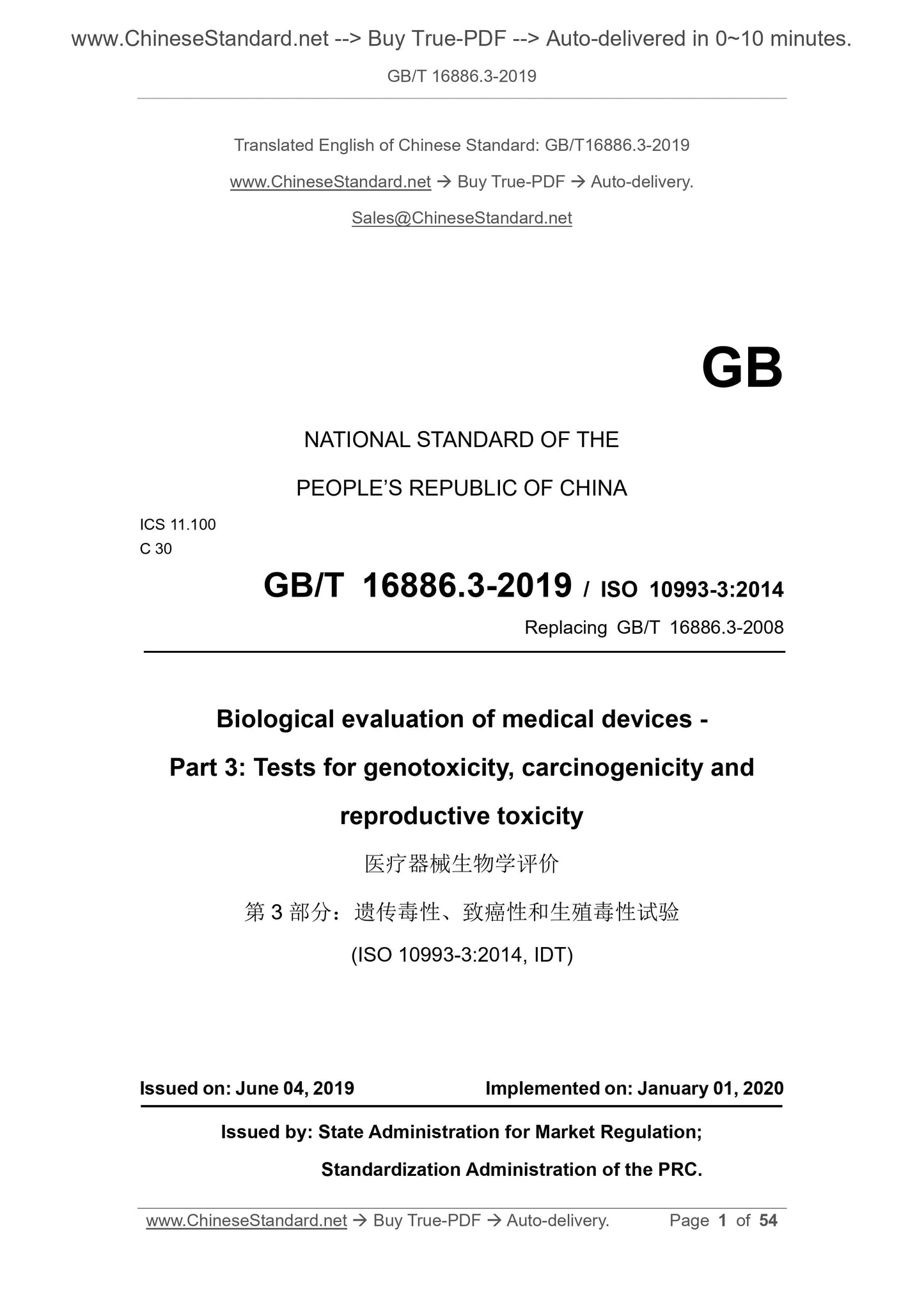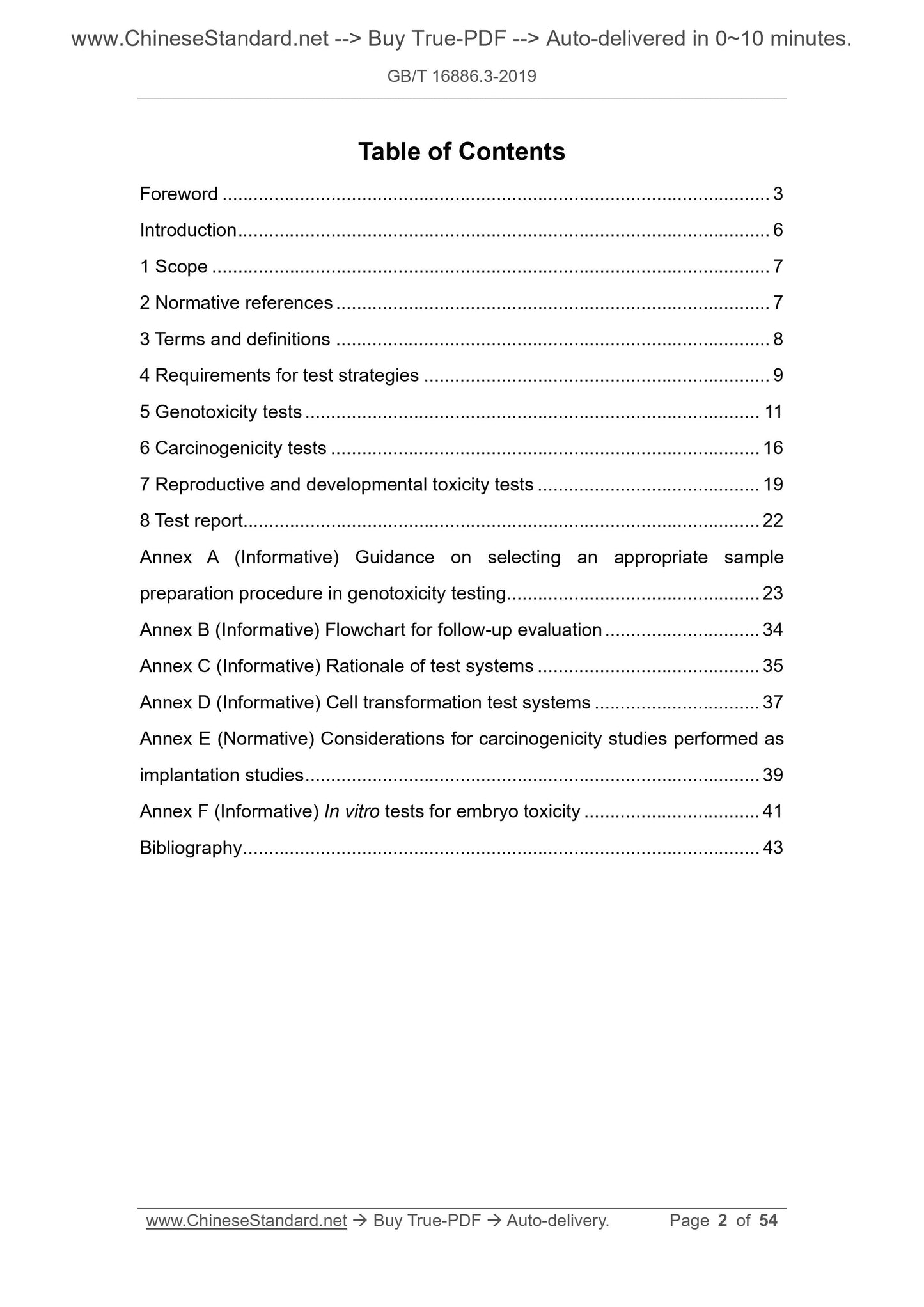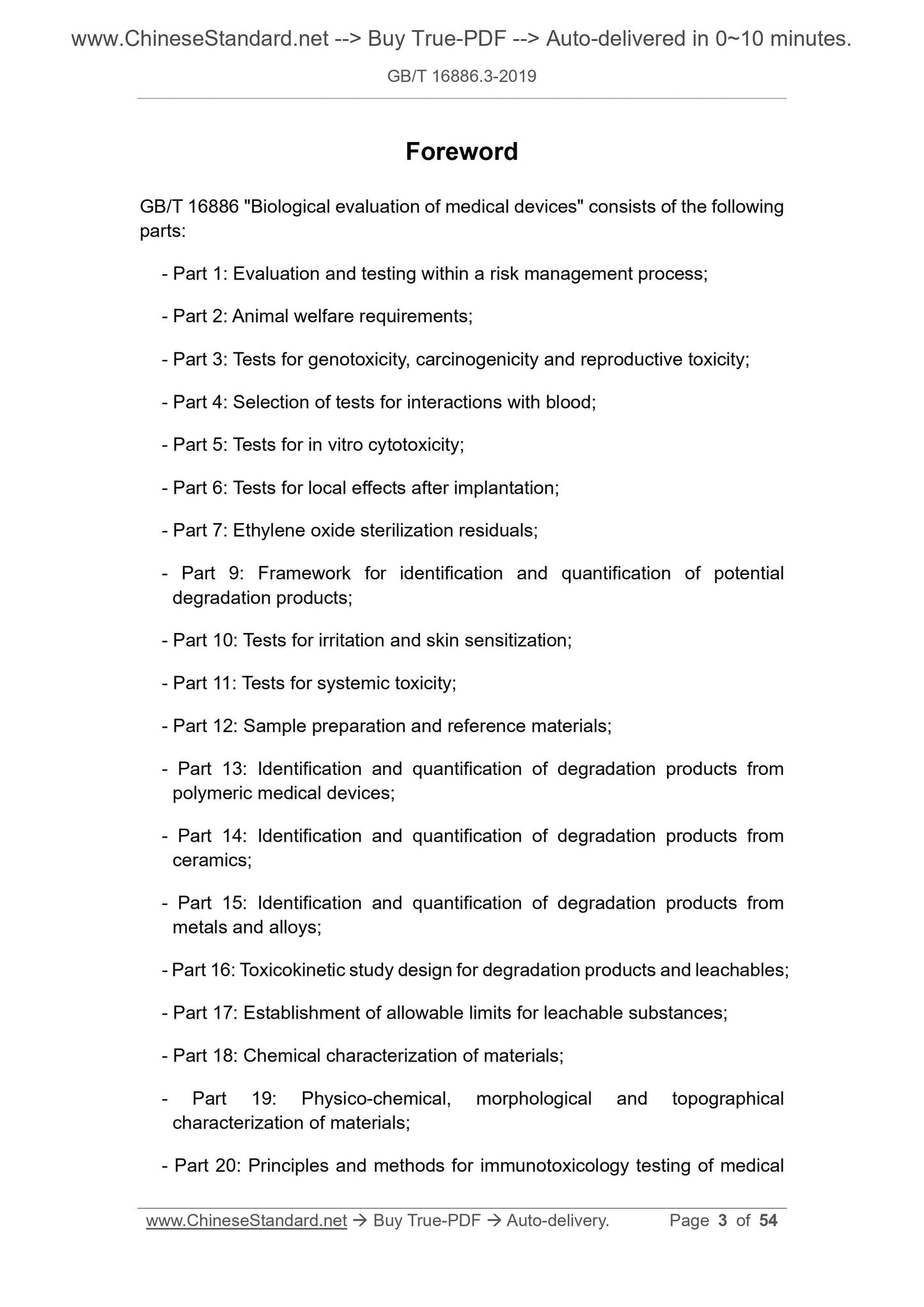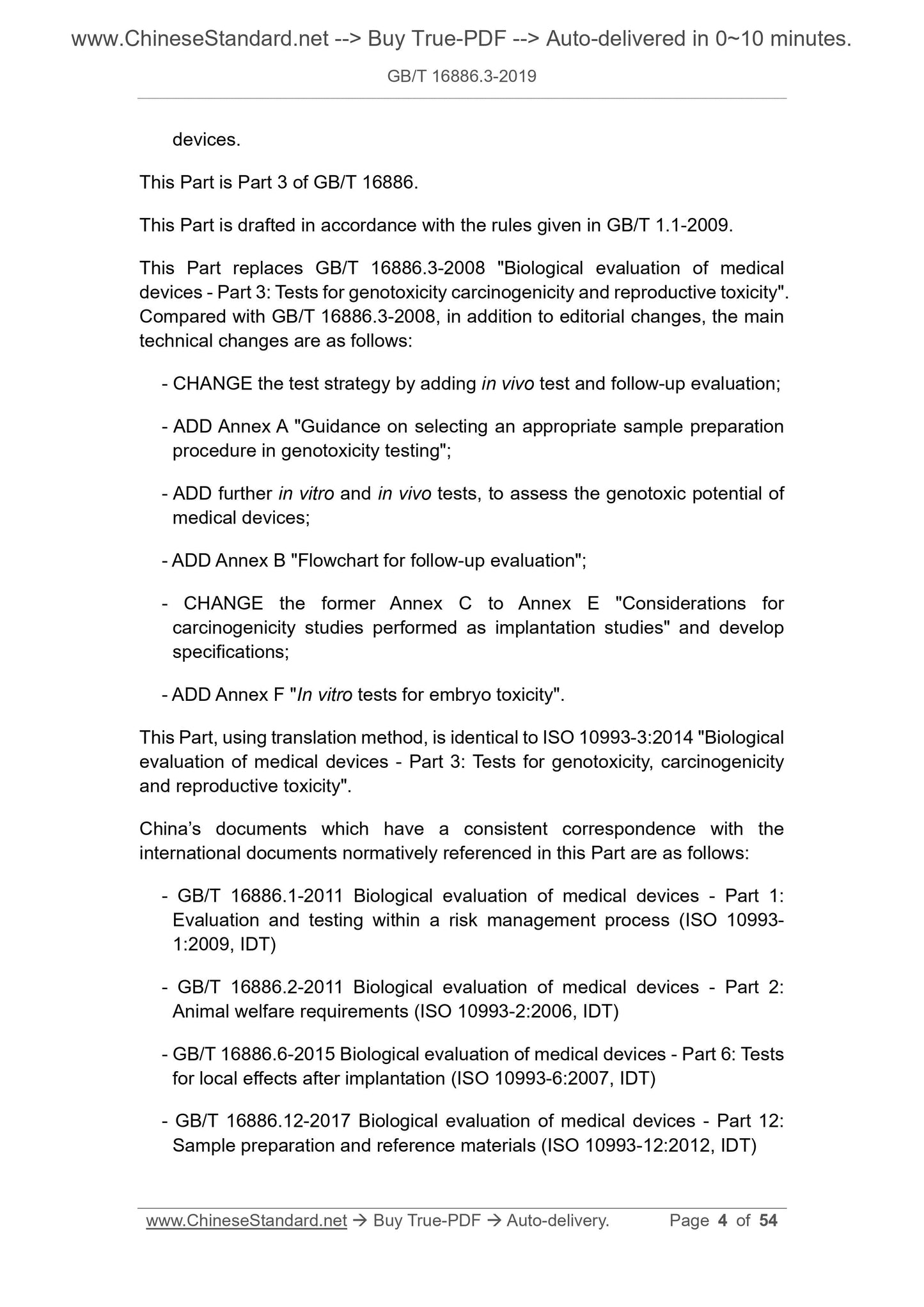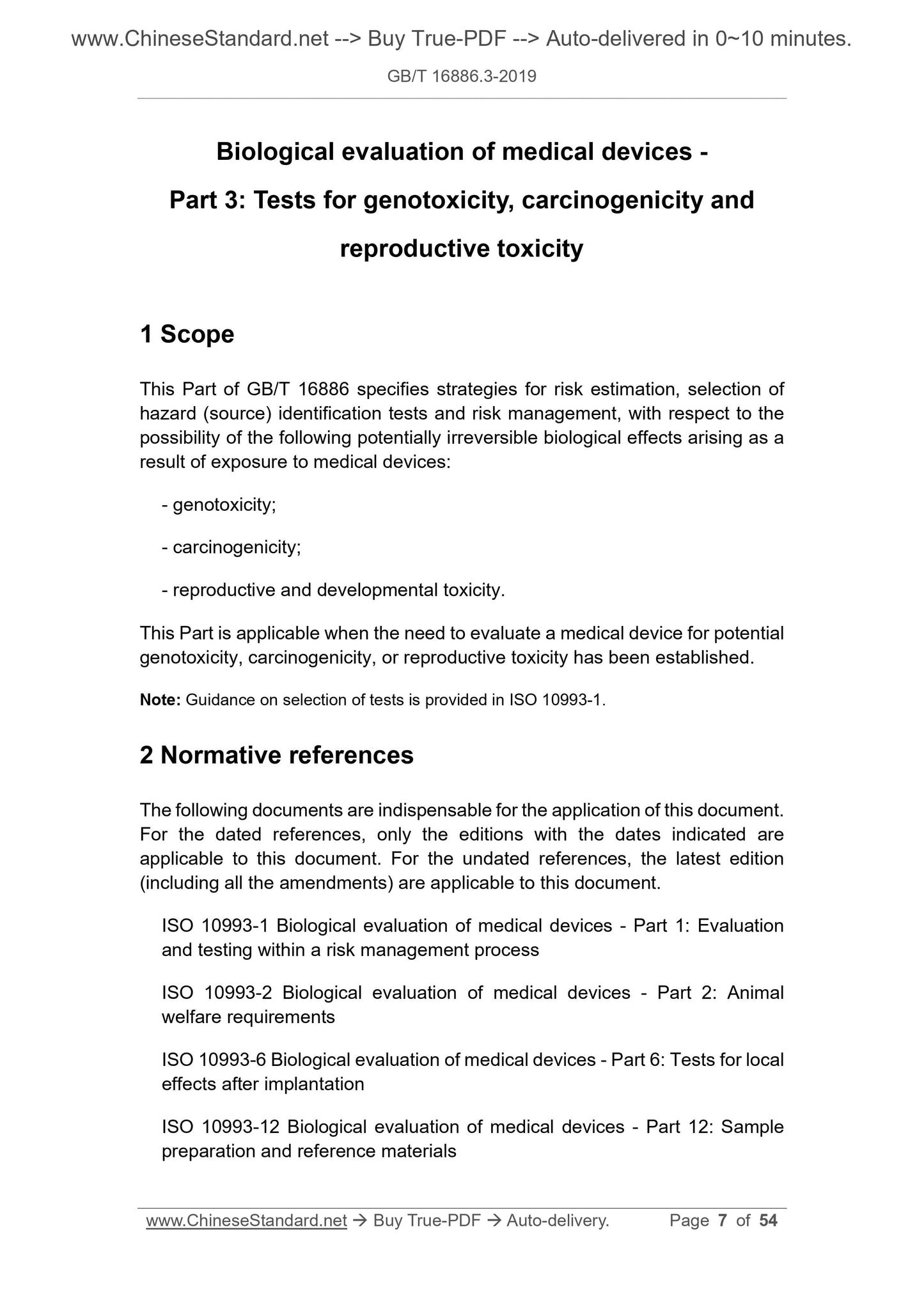1
/
of
5
www.ChineseStandard.us -- Field Test Asia Pte. Ltd.
GB/T 16886.3-2019 English PDF (GB/T16886.3-2019)
GB/T 16886.3-2019 English PDF (GB/T16886.3-2019)
Regular price
$460.00
Regular price
Sale price
$460.00
Unit price
/
per
Shipping calculated at checkout.
Couldn't load pickup availability
GB/T 16886.3-2019: Biological evaluation of medical devices -- Part 3: Tests for genotoxicity, carcinogenicity and reproductive toxicity
Delivery: 9 seconds. Download (and Email) true-PDF + Invoice.Get Quotation: Click GB/T 16886.3-2019 (Self-service in 1-minute)
Newer / historical versions: GB/T 16886.3-2019
Preview True-PDF
Scope
This Part of GB/T 16886 specifies strategies for risk estimation, selection ofhazard (source) identification tests and risk management, with respect to the
possibility of the following potentially irreversible biological effects arising as a
result of exposure to medical devices.
Basic Data
| Standard ID | GB/T 16886.3-2019 (GB/T16886.3-2019) |
| Description (Translated English) | Biological evaluation of medical devices -- Part 3: Tests for genotoxicity, carcinogenicity and reproductive toxicity |
| Sector / Industry | National Standard (Recommended) |
| Classification of Chinese Standard | C30 |
| Classification of International Standard | 11.100 |
| Word Count Estimation | 34,374 |
| Date of Issue | 2019-06-04 |
| Date of Implementation | 2020-01-01 |
| Issuing agency(ies) | State Administration for Market Regulation, China National Standardization Administration |
Share
